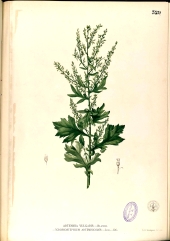




 7
7




Cynthia Carter wrote:Hi, Peter! I would love to grow mushrooms but am a little nervous about tasting them. Is there any "rule of thumb" about how to tell if something is poisonous. What is you advice for someone who has never grown her own and does not want to poison herself?
Seeking a long-term partner to establish forest garden. Keen to find that person and happy to just make some friends. http://www.permies.com/t/50938/singles/Male-Edinburgh-Scotland-seeks-soulmate
 4
4




 5
5




I am the mulch queen!
 4
4




sow…reap…compost…repeat
 3
3




Miriam Johnson wrote:The only real way to do it is to find a list of toxic mushrooms present in your area and get good at identifying as many of them as possible.
It's time consuming, but if you REALLY want to get into mushroom hunting, it's a great place to start! Besides, it's more important to learn what NOT to eat at first.
Pecan Media: food forestry and forest garden ebooks
Now available: The Native Persimmon (centennial edition)
 3
3




Amy Gardener wrote:Miriam is absolutely right.
AND, if you want a rule, this one helped me when starting out with book knowledge but no experts my area.
Some young gilled mushrooms begin life in a sack that conceals their gills. (example, destroying angel and death cap)
Not all mushrooms with gills are deadly poisonous. (example, grocery store mushrooms)
ALL deadly poisonous mushrooms have gills. (example, destroying angel and death cap)
THEREFORE, if you don’t know for sure,
Never taste a gilled or a premature mushroom.
Dan Boone wrote:
I am not arguing with this but it is the exact opposite of my approach. I have learned a few of the most common edible mushrooms in my area -- well enough to be confident in my identifications.
I don't give any other mushrooms a second glance. Just not interested. If they're not common and numerous and easy to find in good quantity (like oysters, which sometimes present thirty or forty pounds on a single old tree trunk around here) it's easier just to assume everything I see that I don't recognize is poisonous.
Since the OP asked about growing mushrooms, her problem is a lot easier than the mushroom hunter's problem. She's going to have just one or two or a few kinds of mushrooms that are supposed to be growing where she put them. The first time she grows a crop, she could (if necessary) go to the nearest fancy food store and buy a plastic clamshell of the kind she is growing, and compare them side by side. Once she's grown a successful crop, she'll be so familiar with that kind that she'll never have trouble telling if subsequent crops are the same thing. The odds of a dangerous look-alike growing in her sterilized spawn are not high enough that I would choose to worry about that.
I am the mulch queen!
 2
2












Kevin Hoover wrote:The only “rule” I’ve heard of that our mushroom club observes (I think it was first stated by a very knowledgeable Bolete specialist in another club) concerns only Bolete mushrooms, those that grow on a stem and have pores instead of gills. And this rule may only be based on what we find in the eastern US.
Don’t eat any Bolete that tastes bitter, bruised blue, or has red pores.
I realize observation of this rule will cause you to bypass some very good edible mushrooms, but it’s probably a good idea for a beginner. Boletes can be very hard to identify. And there are Boletes that will make you sick, and at least one that is deadly.
Basically, don’t eat anything unless you can identify it. My rule of thumb on eating a mushroom that is new to me, is that I will not eat it until someone I trust seconds my ID.
I am the mulch queen!





|
It's fun to be me, and still legal in 9 states! Wanna see my tiny ad?
Freaky Cheap Heat - 2 hour movie - HD streaming
https://permies.com/wiki/238453/Freaky-Cheap-Heat-hour-movie
|







